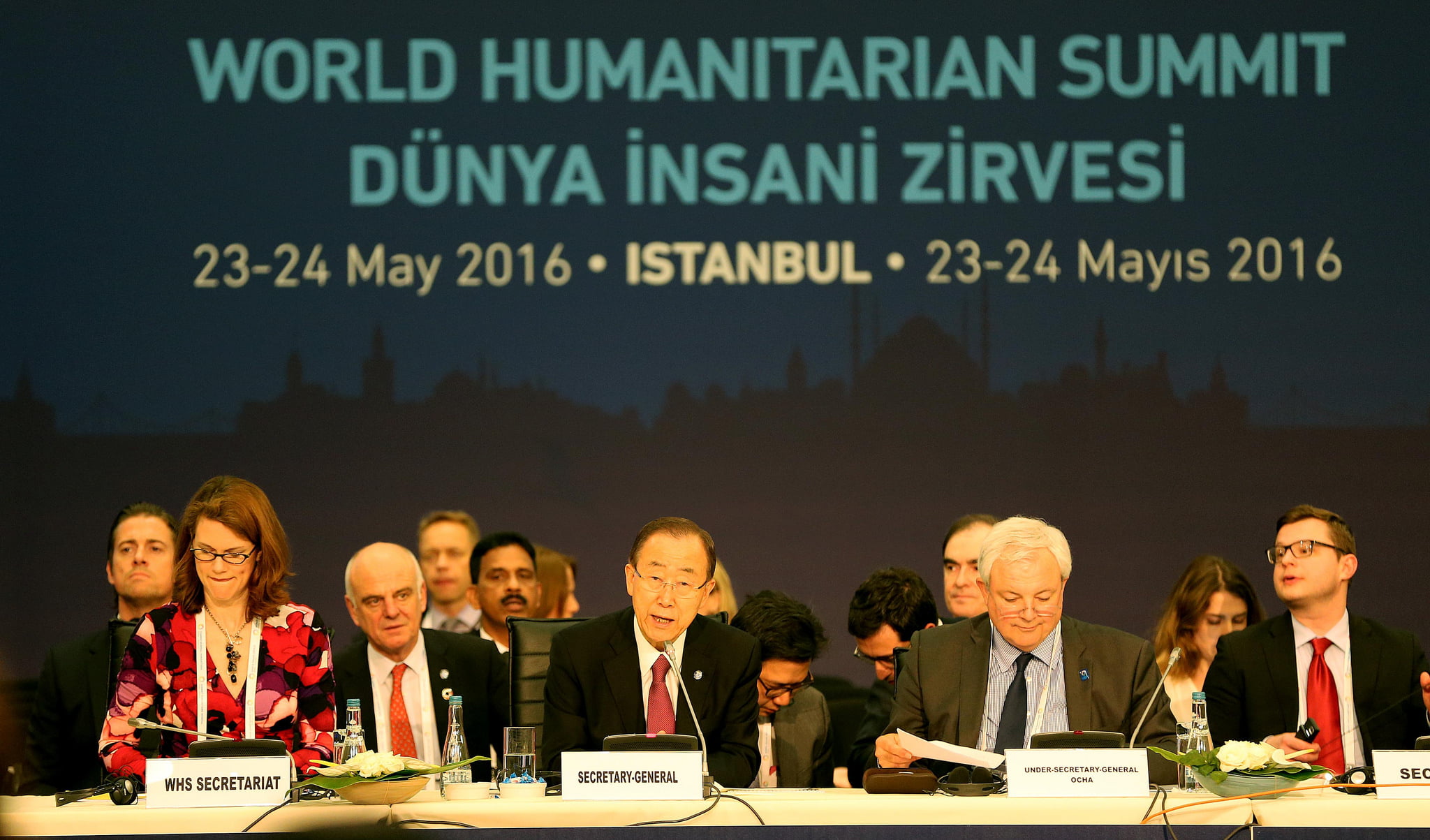(World Humanitarian Summit, Istanbul) — The World Humanitarian Summit ended yesterday evening — and though it may come as a surprise to many, much of the discussion in Istanbul focused squarely on the Sustainable Development Goals–the set of 17 anti-poverty goals established at the United Nations Summit last September.
Although often conflated, most people view humanitarian aid and development programs very differently. While one is supposed to be short term, the other concerns the long term improvement of communities and their populations. One would think these two things should go hand in hand, yet for all focus on the Millennium Development Goals over the past 15 years, very little was discussed in the development world about communities in crisis settings.
That’s because a choice was made back in 2000 when the MDGs were launched: conflict impacted communities would not be counted in the assessment of the goals. Thus Uganda would be judged on how well it was meeting its goals based on the progress in the central and southern regions of the country, but not in northern Uganda where the conflict with the Lord’s Resistance Army continued.
Likewise, where conflict was more pervasive such as in Iraq, the entire country would not be included in the global evaluation of how the well the world was meeting the goals. It did not matter that the rights and institution building encouraged by the MDGs would have to be implemented in these areas eventually, or that the people impacted by these conflicts needed things like education, quality sanitation and women’s empowerment just as much as everyone else. Some people counted and some did not, simple as that. Those who put together the MDGs reasoned it would be too difficult to try to develop and monitor communities in crisis settings, so for now at least, they would have to be left behind.
That made sense at the time, but the problem with such reasoning is that development is often directly connected to state fragility, making underdeveloped countries far more likely to break out into conflict. While it is certainly more difficult to launch a development program in a crisis setting, by not doing so, getting those communities back on their feet after a disaster becomes that much harder and makes further conflict more likely.
Victor Ochen, an NGO leader from Northern Uganda, addresses the Summit.
A Different Approach
This compromise over crisis communities changed with the launch of the Sustainable Development Goals last year. As the scope of the SDGs increased over the original MDGs, so did the scale in terms of who would be counted. Although often overlooked, the inclusion of crisis settings in the reach and evaluation of the goals is probably the most significant aspect of the post-2015 program.
The importance of ensuring this inclusion becomes a reality has been reiterated throughout the summit this week. Although humanitarian emergencies are generally seen and treated as short term situations, the reality is far too often they last for years, and sometimes even decades. Meeting the basic survival needs of people in these crises is important, but given the long term nature of many of these emergencies, so is meeting development needs such as education, job training and healthcare.
This is why one key theme of the summit has been to “Leave No One Behind.”
Beyond the catchphrase, UN Dispatch spoke with Rosa Malango, the UN resident coordinator for Uganda, on what that means in a practical sense. “Leaving no one behind means people who are affected by disasters, by civil wars, by conflict, by poverty — regardless of the situation that makes you vulnerable, you too need to be given a chance to be not left behind and improve the quality of your life,” she said. In her view, the World Humanitarian Summit is not separate from the SDGs, but a critical component in making the SDGs a reality.
Yet there is no denying that conflict zones pose specific challenges that development organizations do not usually need to address such as security, access and a constantly changing landscape based on the progression of an armed conflict. Even here, Malango sees an opportunity rather than an insurmountable challenge. “I believe [working] in a complex environment does two things. One it takes us out of the box. So we are working with the private sector. We are working a lot more with local NGOs. We are working with regional organizations…whatever it takes to get to the people and find out what they need,” she said. “The second thing that it does is the SDGs challenge us to bring all our resources to bear. Whether it is political, humanitarian, human rights – we need to bring it to bear at the same time.”
That concerted effort is certainly called for in the numerous humanitarian emergencies facing the international community today. As Jan Egeland pointed out at the summit, mere access to all the people who need assistance it is still a challenge, and one that cannot be achieved by one aid agency or one government alone. Partnerships and resource sharing will be key in addressing the new challenges emerging from crisis settings. Combining the spheres of emergency humanitarian aid with long term development programs seems the most logical step to take in facing increasingly complex emergencies.
“For decades we lost time thinking we have to do humanitarian [programs] first, and then development. We have learned that is not as effective. And the SDGs gives us the opportunity to look at what are the needs in a particular place,” said Malango. “So let’s look at what they already have and what is missing, and help them manage the shocks and actually be better after the crisis.”
